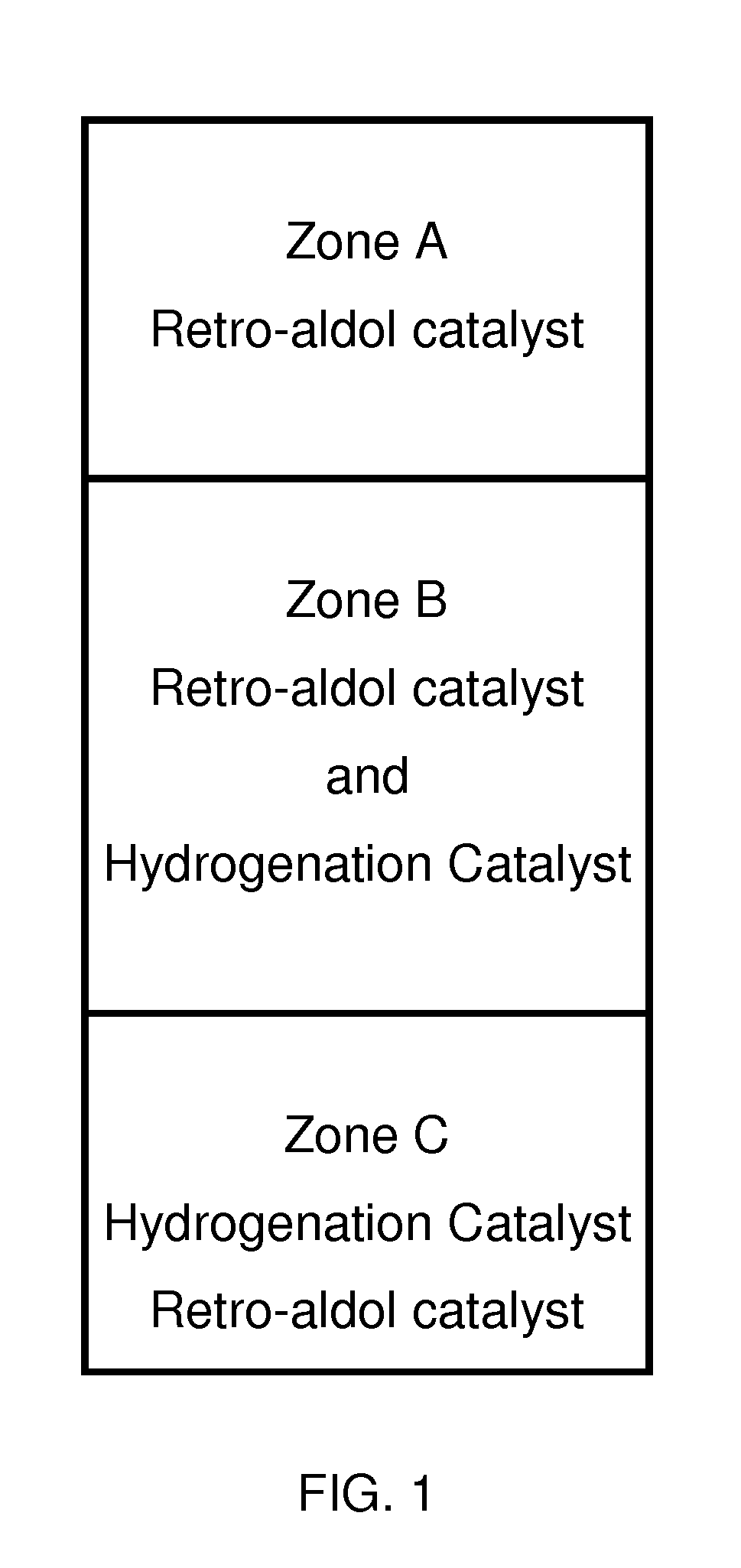Process for the continuous production of ethylene glycol from carbohydrates
a technology of ethylene glycol and continuous production, which is applied in the field of continuous production of ethylene glycol from carbohydrates, can solve the problems of unprofitable reactor concentrations, unfavorable commodity production processes, and introduction of unnecessary complexity, and achieves the effect of batching or semi-batch, and reducing the cost of production process
- Summary
- Abstract
- Description
- Claims
- Application Information
AI Technical Summary
Benefits of technology
Problems solved by technology
Method used
Image
Examples
example 1
[0051]In this first example the catalyst reactor which is equipped with a stirrer to provide agitation is charged only with the reducing catalyst and operated at 245° C. The feed consists of glucose at 20 wt % in water and is fed at the top of the reactor. Hydrogen is fed into the reactor at 1500 psig. No retro-aldol catalyst is provided. Once the reactor is lined out samples are collected and the conversion of glucose to ethylene glycol is very low with modest amounts of propylene glycol also formed. The major product formed is sorbitol.
example 2
[0052]In this experiment similar to example 1 the catalyst reactor is charged only with a retro-aldol catalyst and operated at 245° C. The carbohydrate feed composition is the same as that used in Example 1 and is fed at the top of the reactor. Hydrogen is fed at 1500 psig. Once the reactor is lined out samples are collected and analyzed. The conversion to ethylene glycol is low with many unidentified products made.
example 3
[0053]In this experiment similar to example 1 the catalyst reactor is charged with retro-aldol catalyst and reducing catalyst and operated at 245° C. In this configuration the incoming feed encounters both the reducing catalyst and the retro-aldol catalyst as soon as it enters the reactor. The feed composition is the same as that used in Example 1. Hydrogen is fed at 1500 psig. Once the reactor is lined out samples are collected and analyzed. The major product identified is ethylene glycol but substantial amounts of sorbitol are also identified. Higher levels of propylene glycol are also identified.
PUM
| Property | Measurement | Unit |
|---|---|---|
| temperature | aaaaa | aaaaa |
| temperature | aaaaa | aaaaa |
| temperature | aaaaa | aaaaa |
Abstract
Description
Claims
Application Information
 Login to View More
Login to View More - R&D
- Intellectual Property
- Life Sciences
- Materials
- Tech Scout
- Unparalleled Data Quality
- Higher Quality Content
- 60% Fewer Hallucinations
Browse by: Latest US Patents, China's latest patents, Technical Efficacy Thesaurus, Application Domain, Technology Topic, Popular Technical Reports.
© 2025 PatSnap. All rights reserved.Legal|Privacy policy|Modern Slavery Act Transparency Statement|Sitemap|About US| Contact US: help@patsnap.com


